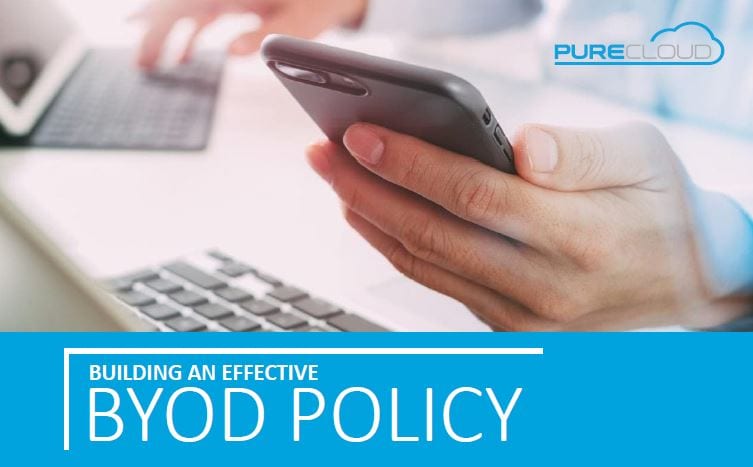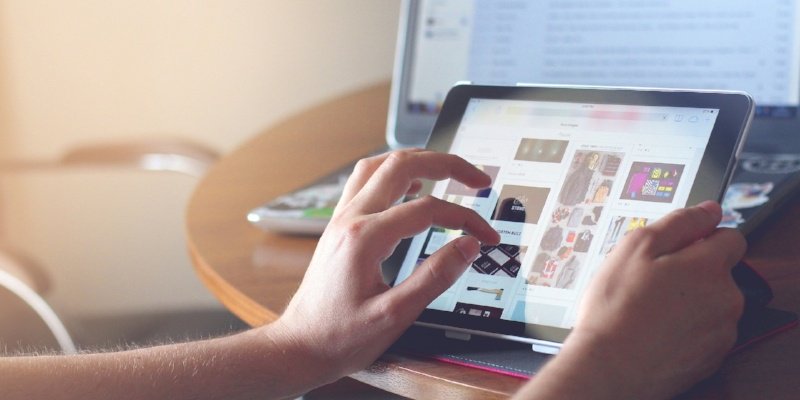Despite seeing a fall in Covid-19 cases over the last few months, many organisations are still working remotely and may continue to do so for the foreseeable future. While remote working is not new it is happening on a far greater scale in the current situation and this has contributed to a huge spike in the bring your own device (BYOD) approach.
Yet it’s important to remember that while this happens, businesses still have legal obligations to ensure company, client and sensitive information remains secure. And while the response to Covid-19 had to be done with urgency, this does not qualify as an exemption for not adhering to security legislations.
So if you are allowing staff to use personal devices for work, even if it’s just in the short-term, it is critical to deploy BYOD measures. Doing this now, will pay off in the long-term, when Covid-19 is a distant memory.

WHAT IS BYOD?
BYOD refers to the practice of allowing employees to use personal devices to connect to the business network and access work-related systems, documents, and data. Personal devices could include smartphones, personal computers, tablets, or USB drives. Accessing work emails via a personal device such as your phone can also be classed as a BYOD approach.
benefits to businesses

Increased Productivity
BYOD is praised for its ability to drive productivity. According to a Frost and Sullivan report, BYOD bolsters productivity by at least 37% and saves employees up to 58 minutes per day.

Employee Satisfaction
It is widely accepted that BYOD promotes both increased job satisfaction and employee retention because it gives staff the tools they need for mobility and supports flexible work arrangements.

Reduced Company Costs
BYOD could save you money as you won’t need to fork out for new equipment or software licenses. It can also minimise overheads for the business relating to procurement and provisioning.
INCREASED SECURITY RISKS
Despite the benefits of this approach, it also poses greater security risks than a traditional setup. While easily mitigated, you should think about how much the following risks matter to you before deciding to implement or continue with BYOD at your business.

Control
BYOD deployment means you have less control and visibility of a user’s personal devices than you may like. Employees are not always careful, and staff can cause havoc if they have too much access to data.
While you can educate heavily on security best practices, there’s no guarantee that your employees will take this advice or make questionable decisions when stressed or busy.
But software like MDM can mitigate this by allowing you to set strict policies on things like user access, and even geographic boundaries to give you better oversight and central control over devices connected to your network.

Cyber Threats
New cyber security threats emerged daily before Covid-19, but cyber criminals have already exploited the crisis to launch 667% more phishing attacks and are constantly looking to take advantage of vulnerabilities in your security.
Investing in technology like Umbrella or Sophos Intercept X that actively searches for and blocks both known and unknown cyber threats like malware, ransomware, virus’, and phishing is a good way of helping to mitigate this risk.
You should also remember that users are the weakest link in the security chain. Staff need to be educated on how they can reduce security risks by understanding threat techniques and reporting possible threats.

Data Leaks/Breaches
Data leakage is a possibility when personal devices come into play. Data can be lost or exposed when devices are misplaced or stolen, or if a personally owned device is infiltrated by cyber criminals.
Protecting sensitive data remains a mandatory obligation under GDPR, regardless of whether it is being processed onsite or from your employee’s homes and their personal devices.
Implementation of security barriers, MDM, user policies and backups are crucial to a healthy BYOD program and can help you to resolve – or at least mitigate – these issues while ensuring you’re compliant.
BUILDING An Effective POLICY
Luckily, with the right technical and procedural controls, many of these risks can be managed.
Once you’ve decided that BOYD would work for you, there are several elements you should consider defining and including in an effective BYOD policy.
And with businesses experiencing more downtime than they’ve had in years, now is a good time to start building or reviewing your BYOD policy. Things to think about include:
Decide Acceptable Devices
Think About Acceptable Use
Decide Data & App Ownership
Security
Risk & Liability Disclaimers
Employee Exit Strategy
User Agreement and Acknowledgement
Consistent Reviews and Audits
Fill in your details to claim your FREE BYOD policy building guide with tips on what to include and how to get started!

free guide to bYOD policy building

THE RISE OF BYOD & THE FUTURE
While it’s still unclear how long businesses will continue to work from home, Covid-19 has tested organisation’s capacity to work remotely. And because it’s worked so well for a good proportion of UK businesses, it is likely that remote working and BYOD will continue beyond the Covid-19 crisis.
And with this massive increase, it’s no surprise the BYOD market is set to reach nearly $367 billion by 2022, up from $30 billion in 2014. So time spent ensuring that staff working from home are secure and effective is a good investment.
Our prediction? BYOD is here to stay.
ENSURE BYOD SECURITY WITH PCS
It’s clear that BYOD security is possible with the right tools to assess security and detect compromise.
PCS has a range of security and device management solutions that can be tailored to fit the way you work.
Call us on 0333 150 6780, email or fill out the contact form below for a free and informal chat about how we can help.





Recent Comments